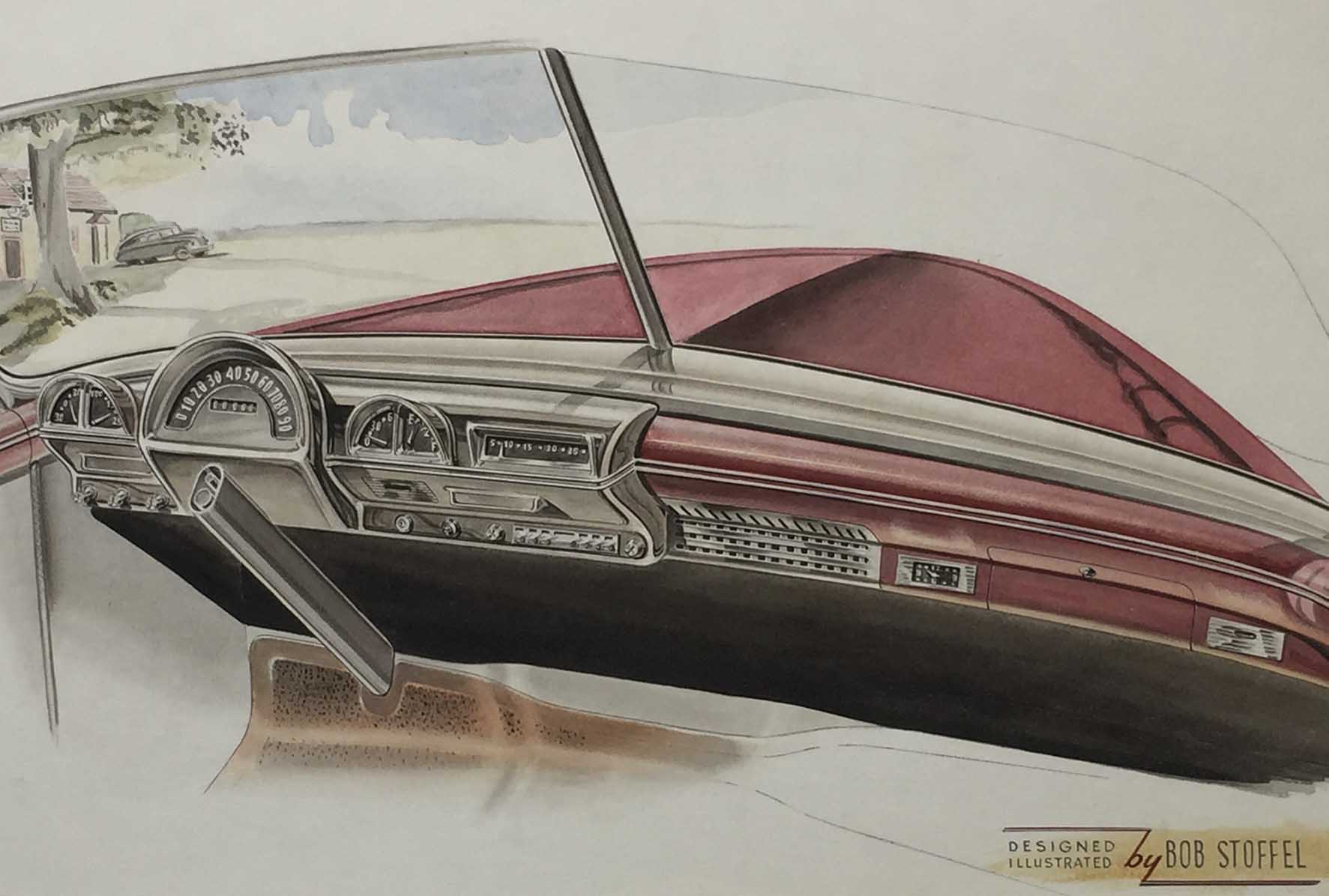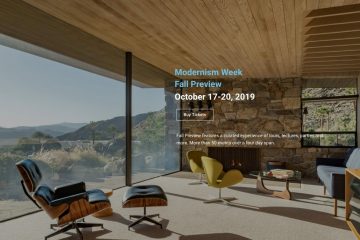Concept cars are about dreaming big and discovering what’s possible in the automobile world. However, current car manufacturers are creating concept cars that are all about speed and environmental friendliness while using computer technology. Conversely, automobile design in the mid-century was all about designing a grand, space-age futuristic vehicle with the artist’s personal skill and style.
Using pencil and gouache, these stylists brought their visions to life. Every nuance and expression of the artist was captured, imagining automobiles into high-tech transportation devices or into sleek, modern sports cars. Despite the original intent of the automobile being simply to transport people, some people saw them as much more.
The Birth of the Concept Car
Although the first automobiles were an engineering marvel, they were not exactly eye-catching. Henry Ford was more concerned with having their success based on “engineering prowess,” not necessarily their visual appeal.
But after the devastating impact of the Great Depression, on both the economy and the outlook of Americans, one car designer decided to use his Hollywood roots to bring style and excitement to the world of automobiles.
Harley Earl began his career customizing cars for Hollywood stars in his father’s automobile shop. After joining General Motors in 1927, he began the first dedicated design department for an automaker.
Earl’s goal was to provide sleek, unified designs for automobiles. “Earl wanted smooth, flowing lines, with exterior parts ‘built-in’ to the design, blending with the whole,” noted historian Peter Grist.
Realizing the potential for poor designs and ideas to tarnish the great name of General Motors, Earl proposed the idea of the concept car. Instead of producing cars that might be too radical, only one would be produced as a concept car, saving the company money and potential bad publicity.
Although this idea was born before WWII, concept cars didn’t really take off until afterward. And when they did, they really made an impression.
Cars of the Future
After seeing the sleek, sporty cars of Europe, GIs returning from WWII had a major impact on the design of American automobiles. Americans were eager to see more exciting car designs from manufacturers. Some concept cars were updated versions of classics, and some were more cutting edge.
Beginning in 1948 with William B. Stout’s fiberglass “car of the future,” automobile designs became more futuristic. Raymond Loewy’s Studebaker Avanti concept had a unique, streamlined look.
In the 1950’s, concept cars were either “out of this world” or made for people who spent a lot of time in their cars. The Lincoln Futura (modified to be the Batmobile for the 1966 TV series Batman) and Ford Mystere are two of the most recognized concept cars of this time. Their fins and plastic domes gave the impression of driving a rocket down the street. Another well-known concept car is the Chevrolet Bel-Air, seemingly made for enjoying double-features at the drive-in.
What Makes These So Timeless?
Even though many of these car design sketches were never realized at the production level, they still hold some magic in their pen strokes. These cars were designed with “naïve optimism”, when worries of foreign competition, oil shortages, and environmental regulations didn’t exist. Even more, these are “[works] of art that not only [contain] the height of skill and formal craftsmanship, but also [are combined] with cultural and historical significance,” says Christopher W. Mount. He also says, “the art of drawing by hand has all but disappeared in many of the design professions,” and “these drawings importantly signify a time when artistic skill and expression met beautifully and significantly with America’s most important and defining industry, the automotive industry.”
Add Automotive and Architectural Pieces to Your Collection
Interested in an original “concept car” design? Look no further than right HERE. If you are looking for the perfect mid-century modern piece to begin, or add to, your own art collection, visit our GALLERY. We have beautiful, original pieces by Raymond Loewy, Vincent Raney, and many others.





